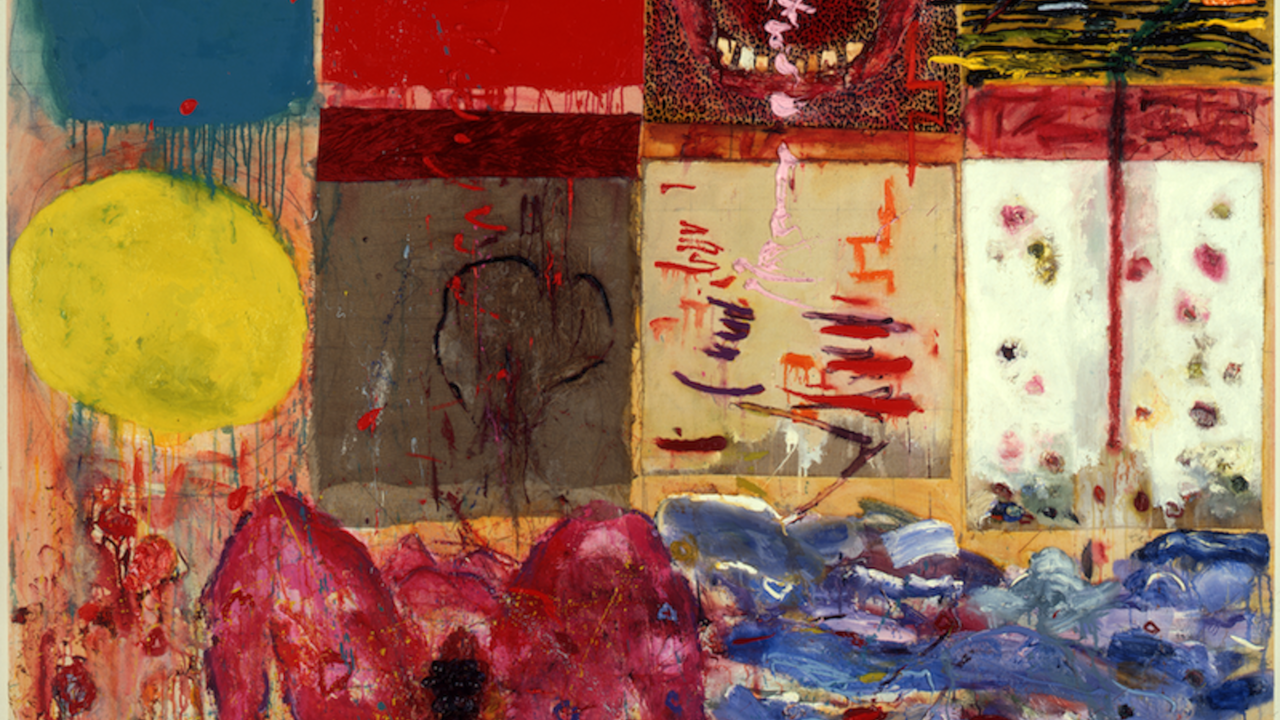Lisa Beck and John Tremblay
Galerie Francesca Pia, Bern, Switzerland
Galerie Francesca Pia, Bern, Switzerland

A particularly optimistic feeling emanated from Lisa Beck and John Tremblay's exhibition 'Natural Wonders'. The artists both live in New York, and although they have known each other for some time and have been linked together in group shows and by critics, this was their first project together. Although none of the pieces in the show were a collaboration in the strict sense of the world, their work merged seamlessly, employing a simplified abstract vocabulary to create an idealized landscape.
Cut from perforated metal sheets, Tremblay's rainbow-shaped mobile Sunset (all works 2001) was framed with a thinly painted Day-Glo orange line. It seemed to hover, poised between two opposites, the handmade and the high-tech. Something about it recalled James Rosenquist's 1960s experiments with Mylar and screenprint mobiles, a wonderfully bizarre mix of painting and evanescent Kinetic sculpture. It was also goofy and humorous: if live rainbows are the ultimate optical phenomena, once forced to materialize they always look kind of childlike. In a similar fashion, Beck's wall painting Nothing Breaks Through, which covered three of the gallery's slanted walls, was involved with another avant-garde concern of the 1960s: the Minimalist emphasis on holistic space and Gestalt. Quasi trompe l'œil, fragile accretions of blue circles were painted in gouache clustered over the gallery's white-walled expanses. If you chose to consider only the painted shapes you were left with a vaguely dispersed abstract composition of circles. The full picture only crystallized if you decided to take into account the empty space as a whole: you could then make out a cartoonish rendition of a cloudy sky. Next to the wall painting, Beck's Downpour - a piece composed of rows of transparent spheres hanging in a circle from the ceiling - reflected, ad infinitum, both the exhibition space and the visitors.
Although Beck and Tremblay twist the phenomenological concerns of Op and Minimal art into cute evocations of natural forms, it would be a mistake to think that their project consists of debunking the inherent idealism of the original models they quote. They belong to a world where abstraction and utopian form have softly grown old and seeped into everyday language, where futuristic design from the 1960s (Eero Saarinen) has become the epitome of vintage, and where the future has become a domestic pattern (tablecloths with Constructivist dots). Theirs is no Postmodern, revisionist project: whereas Peter Halley's neo-Geo purported to disclose the prison cells beneath abstraction's formal perfection, Beck and Tremblay have done away with mathematical rigidity
altogether.
As an exhibition, 'Natural Wonders' evoked a cartoon stage, a child's dream bedroom or a warped show of Kinetic art. This referential fluidity actually explains the artists' use of landscape imagery: a rainbow, raindrops or a cloudy sky constitute the apex of the domestication of Minimal or Op effects into an image. In his introductory statement to the exhibition Tremblay wrote, 'Lisa and I are the opposite of pomp'. Their particular form of natural wonder has more to do with the serendipity of chance encounters and the joys of accidental affinities than with the grandeur of the romantic imagination. A world where waterfalls and rainbows that never fade exist in your apartment, as familiar as your cat or your pair of Nike trainers. The future is bright.
























